The Mother of Thanksgiving
From the BackStory website:
"Historian Anne Blue Wills tells the story of Sarah Josepha Hale, a New England magazine editor who campaigned tirelessly to put Thanksgiving on our national calendar."
From the BackStory website:
"Historian Anne Blue Wills tells the story of Sarah Josepha Hale, a New England magazine editor who campaigned tirelessly to put Thanksgiving on our national calendar."

I'm writing a story and I would like to know how someone in the South would have gone about selling a slave. What if you had only one to sell? Surely you couldn't hold a whole auction just for one. What would you do?
Most likely, the slave owner would let neighbors, friends, and extended family know that the slave was for sale and hope that a buyer could be found through this informal networking. They might also put up a notice in local stores, or take out an ad in the local newspapers. Or they might bring the slave to an informal local venue where people met together from time to time to buy and sell slaves. Another way to sell the slave would be to look for an itinerant slave dealer who was traveling through the area, buying a few slaves here and there and transporting them somewhere he thought he could find a market for them.
But what the owner could not do was sell their slave to someone in a neighboring slave state, unless that state had not yet prohibited the importation of slaves. As early as 1778, slave states, starting with Virginia and Maryland, made it illegal to import slaves from elsewhere. From that time on, residents of those states sold their “excess” slaves to newer slave states farther south, which still “needed” slaves.
An article entitled, “The Restriction of the Slave Trade in the South,” in the Washington, D.C.-based African-American newspaper, The National Era, of May 3, 1849, explained it this way:
The older slave States long since found it necessary to restrict the importation of slaves, with a view of keeping down the supply of slave-labor to the point of profitable employment. … The old slave States looked to the new as the market for their surplus slaves. When the new, under the pressure of an excess of slave labor, shall close their gates against the introduction of slaves, what then will be the condition of the South? Suppose the slave population pent up within its limits, all egress prohibited, what remedy, then, for the evils resulting from an excess of labor, preying upon capital, and over-production, reducing prices? The slave States would be compelled to choose depopulation or emancipation, the loss of the white population, or the freedom of their slaves. The maintenance of slavery would result in the exclusion of the poor whites, whites of the middling classes, and, finally, all but a few overgrown slaveholders, with their innumerable hordes of black dependents; and the ultimate result of this state of things can easily be foreseen.
This is the Future, which the pro-slavery men of the South would avert, by the policy of slavery extension. Slavery-restriction between the States must be accompanied by slavery-extension into the Territories - and when these Territories shall have been converted into States, prohibiting slavery, or, if tolerating slavery, prohibiting the slave trade, then, new territories must be sought to receive the refuse slave population, the inevitable excess of slave labor. In this way, generation after generation is to be cursed, and the whole continent southwardly, not now under our control, to be acquired by the force, fraud, or money of the General Government for the purpose of eternizing the most diabolical system of oppression God's earth has ever groaned under.
Well then, why didn't they just free the slave, which was sometimes done by deed or by will? There could be several obstacles.
The slave codes of nearly all the Southern states placed restraints on slave owners regarding their attempts at the “manumission” or freeing of their slaves. The justification for this restraint on an owner’s “property” was that the state had the right, as explained by lawyer Jacob Wheeler in 1837, “to protect society from even the benevolence of slave owners, in throwing upon the community a great number of stupid, ignorant, and vicious persons, to disturb its peace and endanger its permanency.” But it also had the effect of discouraging slave owners from simply turning out their slaves when they became a burden to them. Typically, an owner was not allowed to free a slave if the owner had an outstanding debt (to meet which, the slave could be sold and the proceeds applied to the debt).
It was also quite common for a state to require any slave owner who wished to free a slave to apply to the state legislature for permission to do so, and to give a reason for the application, such as the slave’s meritorious service, which is to say that it was actually the state that had the power to manumit slaves, not owners.
In addition, it was a typical part of the states’ slave codes that freed slaves had to leave the state, so that they would not “disturb its peace” by fostering discontent among the local slave population or by competing with local whites for work. If freed, the slave could actually be worse off in some respect, especially if he or she was older, ill, had very limited skills, or had no other place to go. If the owner had humane feelings and the slave had been part of their household, with relatives nearby, the owner might judge that they had a responsibility to care for him or her and not put the slave in the position of having to leave the state if freed.
If all attempts to sell a slave failed, someone might also have considered hiring him or her out for a set period of time, if that person could find someone, nearby or far away, who could give them employment. Frederick Douglass gave a good description of this sort of arrangement in his autobiography.
Steven Deyle, Carry Me Back: The Domestic Slave Trade in American Life. New York: Oxford University Press, 2005.
Ralph Clayton, Cash for Blood: The Baltimore to New Orleans Domestic Slave Trade. Bowie, Md.: Heritage Books, 2002.
Winfield H. Collins, The Domestic Slave Trade of the Southern States. New York: Broadway Publishing Company, 1904.
Robert Edgar Conrad, ed., In the Hands of Strangers: Readings on Foreign and Domestic Slave Trading and the Crisis of the Union. University Park, Penn.: Pennsylvania State University Press, 2001.
Teachinghistory.org, Atlantic Slave Trade and Slave Life in the Americas: A Visual Record.
Thomas Thurston, Slave Receipts.
Jacob D. Wheeler, A Practical Treatise on the Law of Slavery; being a compilation of all the decisions made on that subject, in the several courts of the United States and State Courts. New York: Allan Pollock, 1837.
William Goodell, The American Slave Code in Theory and Practice: Its Distinctive Features Shown by Its Statutes, Judicial Decisions, and Illustrative Facts. New York: American and Foreign Anti-Slavery Society, 1853.
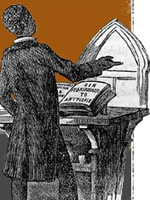
This extensive companion to the PBS documentary of the same name provides interpretive and primary material on the history of African-Americans during slavery and Reconstruction, including essays, personal narratives, original documents, historical readings, and lesson plans. The "Time and Place" chronology of slavery and Reconstruction places the main events of U.S. history relating to African Americans between 1619 and 1881 in their historical context. "Slave Memories" allows visitors to hear the voices of African Americans recorded by the Works Progress Administration (WPA) on their experiences in slavery and Reconstruction. "Resources" includes 17 print resources, 23 books for children, and 30 websites related to slavery. "Slave Experience" allows users to explore slave life through the themes of legal rights and government; family; men, women, and gender; living conditions; education, arts, and culture; religion; responses to enslavement; and freedom and emancipation. Each features essays, historical overviews, original documents, and personal narratives.
A K-12 learning section features historical readings of narratives, slave stories and letters, student plays, links to 19 sites with primary sources, and six lesson plans for middle and high school. This website is a valuable resource for teachers as well as an excellent introduction and overview for those with an interest in the history of slavery and slave life in America.
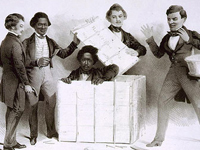
(Note: This website is now subscription-only.)
Designed for students, scholars, and librarians, this site provides access to thousands of primary source documents, maps, images, bibliographic entries, and subject entries drawn from reference resources in African American studies. Six published volumes furnish the majority of the resources: the Encyclopedia of African American History 1619-1895; Black Women in America, Second Edition; Africana, a five-volume history of the African and African American experience; the African American National Biography project, edited by Henry Louis Gates, Jr.; the Encyclopedia of African American Art and Architecture; and the Concise Oxford Companion to African American Literature.
These sources present a wealth of primary source documents, more than 1,000 images, and close to 100 maps, which illustrate events from 1500s South America through the Clinton Presidency. The site also includes more than 5,000 biographies and 3,000 subject entries on events and people, such as 19th-century African American midwives in the Western United States, prominent abolitionists, and charts on African American professional baseball. Useful for research, reference, and class projects on all aspects of African American history.
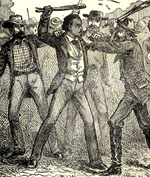
Offering 230 full-text documents, this collection presents the written lives of American slaves, including all known published slave narratives and many published biographies of slaves. Materials include autobiographical narratives of fugitive and former slaves published in a range of formats, such as broadsides, pamphlets, and books.
In addition, biographies of fugitive and formal slaves and fictionalized slave narratives are included. The collection includes well-known authors, such as Sojourner Truth and Frederick Douglass, as well as many authors less commonly known. Documents are available in HTML and SGML/TEI file formats and are accessible through alphabetical and chronological listings. Users can also view images of the covers, spines, title pages, and versos of title pages. Documents have been indexed by subject, but searches return materials in additional collections. An introductory essay by Professor William Andrews is available.
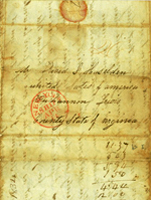
Founded in 1816, the American Colonization Society (ACS) advocated sending manumitted slaves and free blacks living in the United States to Africa. The first "repatriated" black emigrants landed in Liberia in 1821. They were not prepared to till the land and the local, displaced Africans were hostile. Most importantly, the American-born blacks were highly susceptible to malaria and yellow fever.
This website offers the opinions of surviving pioneers, including six compelling letters authored in 1834 and 1835 by Samson Ceasar, a freed slave, who wrote to David Haselden and Henry Westfall of Buchannon, VA. An additional 44 letters were sent by former slaves of James Hunter Terrell to Terrell's executor, Dr. James Minor, between 1857 and 1866. The diverse letters not only reflect the complex bonds between former slaves and masters, but underscore the persistently unequal relationship.
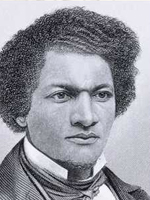
This attractive exhibit utilizes essays and more than 140 images to explore the 400-year history of slavery in the Americas. The site reminds us that together "the slave trade and slavery represented one of the longest, most sustained assaults on the dignity and self-worth of human beings in the history of humankind." The site's home page offers an introductory essay that presents the central themes of the exhibit. The site is centered around nine thematic presentations on the forging of common identities in slavery; the enslavement process in Africa; the transatlantic slave trade; slave labor and slave systems; the struggle against slavery and the abolition of slavery; family life and social development; religion; language, literacy, and education; and culture. Each image is accompanied by an explanatory caption. There is no search feature available on the site. An informative overview of slavery in the Americas, the site is also of interest to those studying African-American culture.
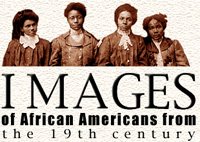
Part of the Digital Schomburg/New York Public Library project, this site contains roughly 500 images selected primarily from the Photographs and Prints Division of the Schomburg Center for Research in Black Culture at the New York Public Library. The items, selected by Marilyn Nance, freelance photographer, and Mary Yearwood, Curator of Photographs and Prints, include prints, original negatives, and transparencies from the 19th century, drawn from collections of family photographs, African-American school photographs, and personal collections. The images in this archive depict the social, political, and cultural worlds of their African American subjects. The site can be searched through 17 subject categories, such as family, labor, Civil War, slavery, social life and customs, and portraits. Under each subject category is a list of images with 15-word descriptions. This easily-navigable site also offers a keyword search engine through which collection items can be accessed. The images download quickly and are of good quality. Ideal for researching African American and 19th century history.
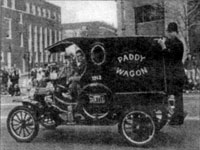
This collection of essays, documents, and bibliographies addresses Atlantic slavery, resistance, and abolition. Source Documents includes about 200 speeches, letters, cartoons, graphics, and articles (visitors may browse by author, date, subject, or document type—no searching), that document slavery in the Americas. Bibliographies contains about 12 detailed bibliographies by scholars of slavery and abolition that can be used in teaching or studying in this area, as well as links to book reviews on the internet. A Scholars Forum posts a 4,500-word featured essay by a noted scholar, and visitors can read past essays as well. Teachers may find useful a Curriculum section, where lesson plans are available, including one for the Amistad affair. It includes a timeline of abolition, a narrative of the incident and the subsequent trials, and an essay. Tangled Roots uses a 1,000-word essay to examine the history shared by Irish Americans and African Americans in America. Neither the most complete digital archive nor the greatest collection of essays, this site is nonetheless a valuable resource for the most recent scholarship of American slavery and abolition.

From Slavery to Freedom: The African-American Pamphlet Collection, 1822-1909 is precisely what it says, a collection of 396 pamphlets written by African Americans or by non-African Americans writing about slavery, Reconstruction, the colonization of Africa, and other pertinent topics.
According to the website, "[. . . t]he materials range from personal accounts and public orations to organizational reports and legislative speeches." Prominent authors include, but are certainly not limited to, Frederick Douglass and Booker T. Washington.
Material can be browsed by title, author, or subject; or you can run a key word search. If you need more material than what is available in the collection itself, there is a list of external resources with related content.